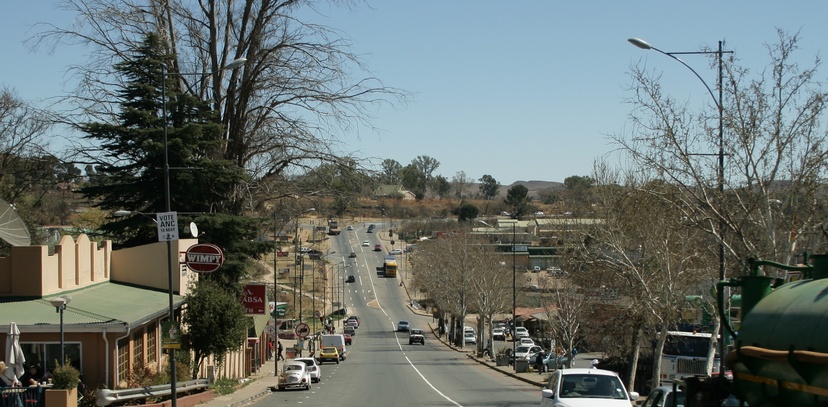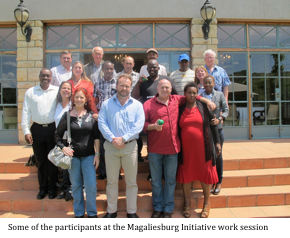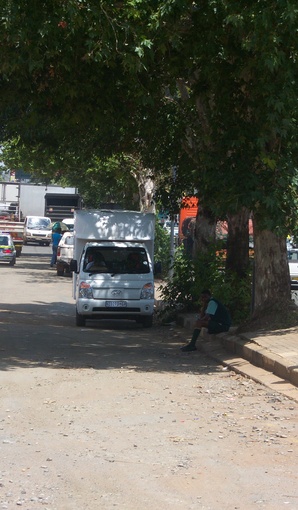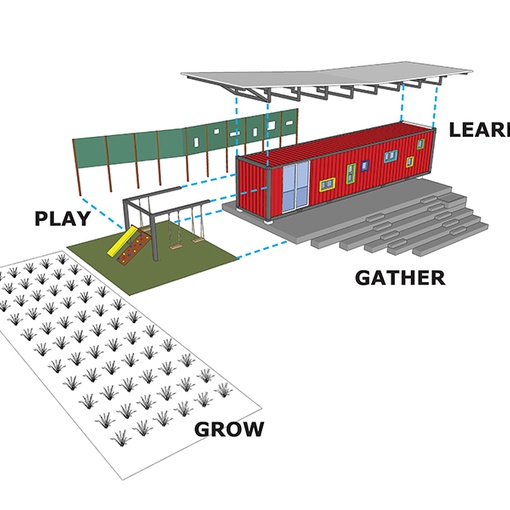
This article is written by Johan Olivier as part of the Social Life of Cities series
“The village of Magaliesburg, lies just below the Southern Range of the Magaliesburg Mountains. The roads and rivers take similar paths, breaking though the steep ridges of the mountains in a few places, only to traverse much of the land along the valleys on either side of the two mountain ridges. The reality of Magaliesburg belies its languid village ambience. There are many places to visit and things to do in the region. A variety of accommodation and a host of fascinating people await you. Whatever your interest, you will find something to delight you as you travel the roads and experience the environment.”
Whilst this is true of Magaliesburg, the town currently finds itself in the same position as numerous other small towns in South Africa – one of declining economic growth, poverty, changing markets and increasing neglect – and one not particularly conducive to attracting potential investors to the area. However, if developed correctly and in a sustainable manner, Magaliesburg offers a treasure trove of opportunity – one rich in natural beauty, culture and an established and diverse community loyal to this place they call home.
Over a number of years, a core group of local individuals has tried to initiate specific interventions to breathe new life into the town – some with great success and others, less so. It has, however, been difficult for this group to sustain efforts over the long term and to obtain ongoing commitment from government and large corporate sponsors. A number of plans have also been commissioned with the intention to change or regenerate development through technical and design mechanisms.
The recently launched (June 2012) Magaliesburg Development Initiative (MDI) is a combination of technical (an approved municipal precinct plan) and professional input on the one hand, and a deliberate emphasis on the need to foster community spirit on the other. This process is based on a Community Investment Platform (CIP) model which was developed by a Gauteng-based, South African town planning consultancy, Akanya Development Solutions.
The Magalies Initiative is based on the premise that the successful upliftment and empowerment of communities and the places in which they live and work, involves a combination and collaboration of all available resources in a consistent and sequential manner. Also, the initiative strives to reflect the development vision of a community in spatial terms.
During a community work session facilitated by Akanya Development Solutions in Magalies on 10th November 2012, the community firstly identified cross-sectoral resources and assets; and secondly, identified viable projects and initiatives. Apart from utilising specific methodologies (i.e. CIP), the main purpose of the work session was, however, to assist the community in sharing their different social and cultural experiences. Some of the community came from underdeveloped settlements in the village whilst others are from more privileged backgrounds. It was therefore important that the sessions built a sense of community identity, belonging and respect for different cultures, backgrounds and beliefs.
Since November a number of bilateral and community meetings have been held. Various project teams were established and a number of project business cases are currently being developed in terms of job creation, place-making, social and youth development, food production and greening. All of these are done in terms of a vision of creating a resilient, high quality eco-friendly destination.
At a follow-up meeting held on 30th April 2013, it was agreed to focus on four key projects - a community park, the Box youth development project, sustainable food production and place-making.
The community park will integrate the envisaged station development and the existing developments in the village of Magaliesburg. It will comprise a natural park setting with clearly delineated picnic spots, children’s adventure zones, sculpture areas and walking trails. The conceptual designs will be done by a group of volunteer landscape architects from the area. The design is to be launched for input during a village wine festival being held in September 2013.
The establishment of community level and small-scale farming activities is a logical extension of the already existing commercial farming activities in the Magaliesburg area. A small group of community members that is already busy with food production activities has been identified and land is being committed for the project. The intention is to train participants in sustainable food production methods and establish local market linkages with hotels and lodges in the area.
The aim of the Box youth development initiative is to provide the youth of the neglected areas in Magaliesburg with resources and facilities that can build their capacity to access opportunities. The Box comprises an inexpensive off-the-grid structure with a high architectural quality to strengthen the aesthetic feature of the entire neighbourhood. It is a green structure incorporating the use of waste and eco-friendly material such as shipping containers and solar panels as its energy source. It is a space where information can be accessed, youth functions can be held and where other initiatives such as sustainable food production can be showcased. Initial discussions with the Magaliesburg Development Youth Forum have been completed and a proposed site identified.
One of the key aspects of the Magaliesburg initiative is to create more jobs by more people visiting the area. However, in order to bring more tourists and visitors to Magaliesburg, the town needs to offer a more inviting experience – one which incorporates streetscape elements, streets and sidewalks, benches, lights, gardens, walls etc. The intention for Magaliesburg is to:
• establish entrance points (gateways and landmarks) for the village of Magaliesburg and the wider tourism region;
• upgrade and landscape sidewalks and road reserves;
• protect and enhance scenic, historic and cultural resources in the area;
• clean up the existing green spaces and riverways;
• identify a theme that can comprise a number of different elements, applied at different places in the community; and
• improve the general maintenance of the area.
Collaboration, synergy, dialogue, sustainability and resource management are but a handful of slogans and phrases that often feature in discussions when it comes to projects such as these. Making this happen, however, requires a very real and long-term commitment by all role-players involved – from the very grassroots level all the way up to corporates who wish to invest in initiatives of this nature.
All too often, such initiatives have lost momentum over time as a result of an absence of some kind of umbrella organisation or project management team which constantly has the “bigger picture” in mind. Akanya is committed to playing such a role. Bringing together roleplayers. Investigating potential avenues for corporate investment. Facilitating dialogue amongst all parties. Overseeing the consistent and sustainable implementation of specific and detailed action plans which will contribute to the overall vision. Identifying opportunities and introducing individuals, community leaders, local business and corporate investors to one another. Encouraging a joint effort so that the word “synergy” does not remain a catchphrase, but a reality for a town with massive potential to become a safe, flourishing and sustaining haven for its people.
Reference: http://www.magaliesburg.co.za/history.html
Johan Olivier
Johan is a qualified and registered town and regional planner with 21 years experience in local government as well as the private sector. In 2005, Johan became a partner in a private development consultancy – Akanya Development Solutions. More recently, Johan has become involved with rural development plans (small town regeneration) that include community investment plans and economic development strategies combined with interventions to address spatial constraints in community development.


